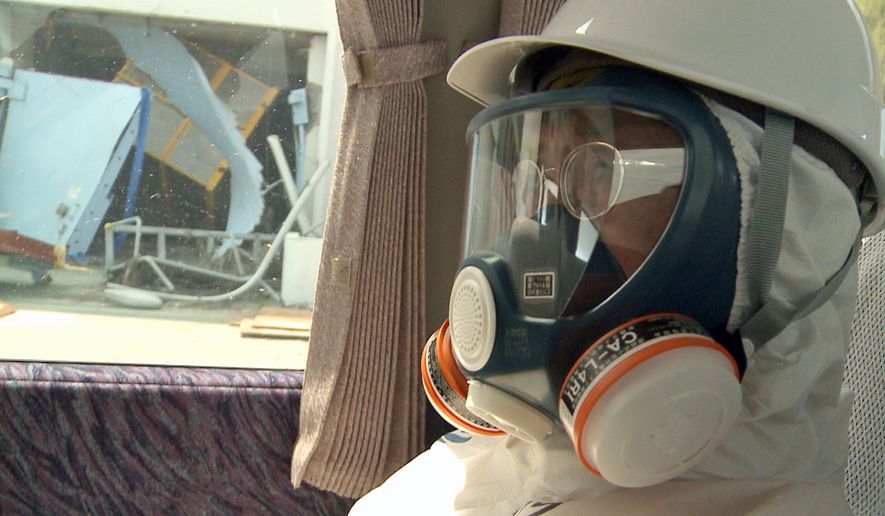TOKYO — Japanese authorities this week released information that paints a more worrisome picture of the ongoing nuclear crisis than the central government has previously admitted.
More than 1,600 workers may have been exposed to dangerous limits of radiation in the first weeks after the March 11 tsunami swamped the Fukushima Dai-Ichi nuclear power station about 150 miles northeast of Tokyo, according to a government report completed in April.
Meanwhile, the Agriculture Ministry announced that at least 2,900 cattle ate rice straw contaminated with radioactive isotopes above legal limits, leaving thousands of consumers across Japan wondering whether they have ingested cancer-causing particles.
In addition, authorities posted online maps showing the fallout of radioactive cesium and iodine from a “nuclear cloud” that floated over the greater Tokyo area, home to more than 40 million people, on March 15.
The newly released information presents a more troubling scenario than originally described in March and April by government officials, who tended to downplay or withhold bad news to calm a public enduring food shortages and hundreds of aftershocks.
Many longtime foreign residents are discussing among friends and on chat sites whether it is safe to remain in Japan.
“It’s time for sensible foreigners living in Japan to consider moving elsewhere,” said a commentator identified as “Chamade” on the chat site of Japan Today in Tokyo.
“This is only going to get worse, and we can bet there will be numerous other produce - fruit and vegetables - as well as seafoods and meats, that will be dangerous to consume. And announced after the fact.”
Many Japanese also are growing increasingly wary of the government’s handling of the crisis and concerned about the spread of radioactive particles.
A video titled “Japanese government killing its own people in Fukushima” has attracted more than 100,000 hits since it was posted on YouTube on Monday.
The video, with English subtitles, shows Fukushima city residents berating a man identified as “Akira Satoh, director of the local Nuclear Emergency Response headquarters” during a seminar, and then following him to an elevator demanding the government test the urine of children in Fukushima.
The report on workers’ health hazards emerged this week after a nonprofit group, the Tokyo Occupational Safety and Health Center, used a freedom of information request to obtain a Tokyo Electric Power Co. (Tepco) document dated April 25, according to Kyodo News.
In the document, Tepco privately estimated that it expected 1,600 workers at the damaged nuclear plant to suffer exposure to radiation surpassing the level deemed the safe limit for workers in a year.
The report then was sent by the Nuclear and Industrial Safety Agency (NISA) officials to the Health, Welfare and Labor Ministry, but the information was not made public. At that time, Tepco and government officials repeatedly told the public that workers were operating within safe limits.
Earlier this week, NISA posted 600 online maps showing how radiation spread in the first week after explosions began at reactors March 12. The data are based on a system known as SPEEDI that measured the amount of radiation in the air every hour from 9 a.m. March 12 to midnight March 17.
Two weeks ago, state broadcaster NHK showed a simulation of a “nuclear cloud” on March 15 blowing south from Fukushima and dropping cesium on the greater Tokyo area and even beyond the Mount Fuji volcano in Shizuoka province.
Japan’s central government at that time denied the existence of such a cloud, and Tokyo’s governor asked people to go back to work as normal, despite a mass exodus of foreigners that week after warnings from the U.S., French, German and other governments.
Also this week, the Agriculture Ministry said that at least 116 farms in 16 provinces, from Shimane province in western Japan to the main cattle-ranching province of Hokkaido in the far north, used contaminated rice straw as feed. At least 2,900 cattle ate the straw before being shipped around Japan, the ministry said.
“Beef containing cesium has already entered into the market,” Hideo Harada, director for livestock policy planning at the Ministry of Agriculture, Forestry and Fisheries, told reporters in Tokyo. “We have to prevent it from reaching consumers by checking meat and recalling tainted products from the market.”
The Health Ministry banned the distribution of beef from Fukushima province July 19 and from Miyagi province July 26. The ministry also banned shiitake mushrooms from Fukushima on July 23, more than four months after people had been eating them after the release of radiation.
High levels of cesium also have been found in samples of milk, tea and seafood, as well as spinach, bamboo shoots and many other vegetables.
Agriculture Minister Michihiko Kano admitted this month that officials didn’t realize that farmers might unwittingly send contaminated straw to ranchers.
The Yomiuri Shimbun, Japan’s largest daily newspaper, quoted an unnamed Agriculture Ministry official as saying: “This is nothing less than a colossal blunder by our ministry. It was beyond our expectations that straw would become a source of radioactive contamination.”




Please read our comment policy before commenting.